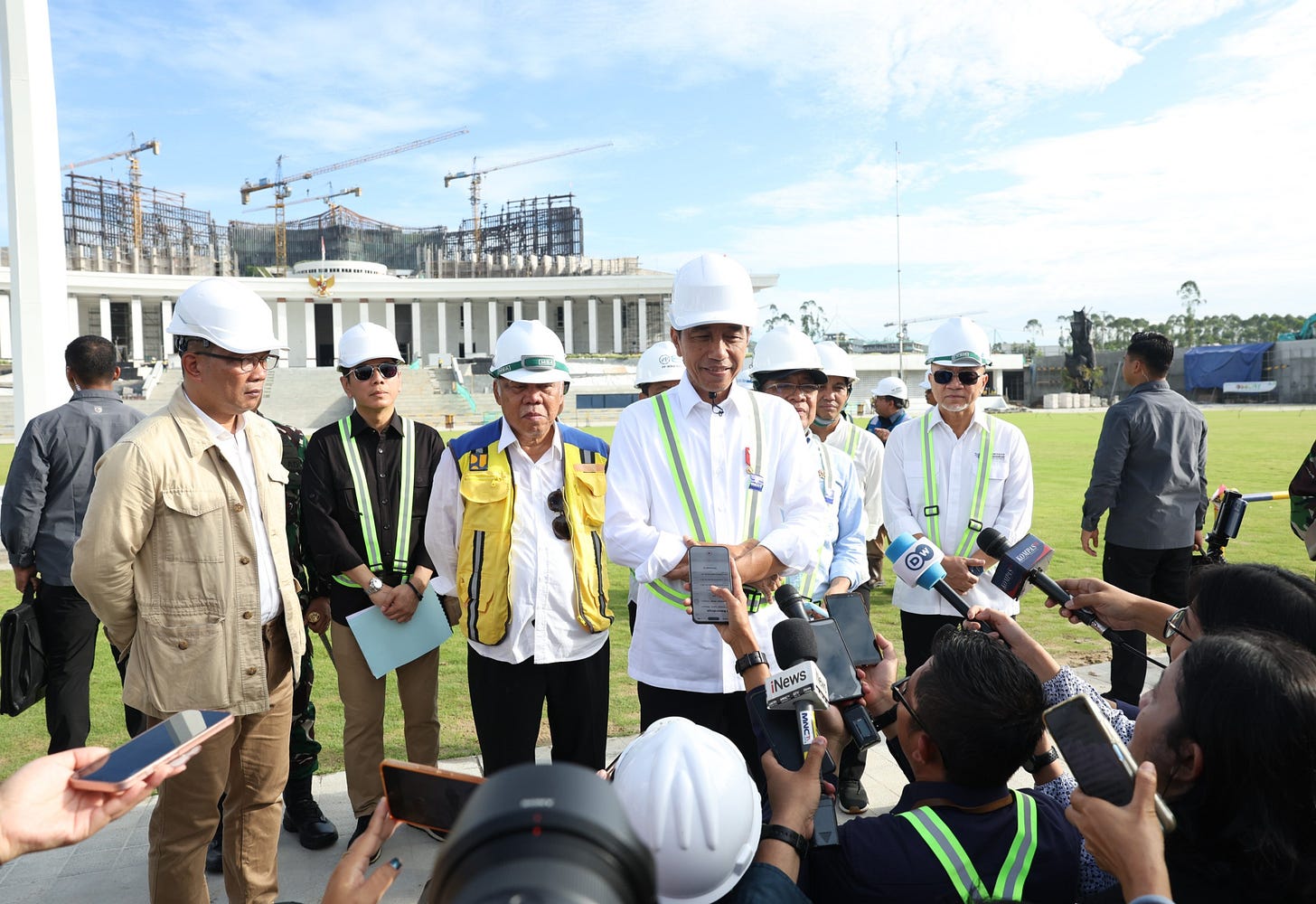Review: Indonesia Giant Capital Move: Nusantara, Prabowo and Beyond
Grand megaproject could impact Indonesia's trajectory as an Indo-Pacific power, with implications for Southeast Asia and the wider world.
A grand megaproject could impact Indonesia's trajectory as an Indo-Pacific power, with implications for Southeast Asia and the wider world.
WonkCount: 1,498 words (~7 minutes)
Review: Indonesia Giant Capital Move: Nusantara, Prabowo and Beyond
Context
"I am committed to advancing Indonesia toward achieving its objective of becoming a fully-developed country by 2045,” Indonesia’s president-elect Prabowo Subianto noted earlier this month in the latest of a series of commentaries meant to preview his vision for the world’s fourth-largest country1. Interestingly and perhaps unsurprisingly, despite a long list of sectoral priorities in Prabowo’s piece from technology to food security, there was no direct mention of Indonesia’s ambitious effort to relocate some capital functions from Jakarta to Nusantara, a priority project of outgoing president Joko “Jokowi” Widodo2. The quest for Nusantara, announced in 2019 to be completed by 2045, is being scrutinized in regional capitals as part of wider questions around Indonesia’s wider geoeconomic outlook under Prabowo (see ASEAN Wonk graphic below on select recent datapoints). Periodic developments have also led to new waves of uncertainty amid delays and challenges on issues such as land and private investment. A recent case in point was the resignation of capital chief Bambang Susantono, well known to close observers of Nusantara as a key figure in its initial international outreach3.
Select Key 2024 Developments in Indonesia’s Giant Capital Move
A recent edited volume The Road to Nusantara, jointly produced by institutions in Indonesia and Singapore, examines current realities and future prospects in Indonesia’s pursuit of its new capital that has wider significance for Southeast Asia and beyond4. In doing so, it provides diverse perspectives beyond official Indonesia government accounts and project presentations, some of which ASEAN Wonk has attended as well5. The question of capital relocation and infrastructure megaprojects has broader regional implications, particularly given that this has not been an easy road for ASEAN states. Beyond the focus on grander China projects in today’s headlines, it is worth recalling Malaysia took years to relocate its capital from Kuala Lumpur to Putrajaya less than 40 kilometers away (as opposed to 2,000 kilometers from Jakarta to Nusantara on another island). Myanmar’s capital move from Yangon to Naypyidaw produced a relatively empty hub beyond multi-lane roads and concrete buildings plain for any visitor to see, amid the pursuit of “revolution-proof geography” alongside everything from astrology to invasion fears as historian Thant Myint-U has noted6. Road to Nusantara has 270 pages and 11 chapters.
Analysis
The edited volume takes a comprehensive perspective on what it sees as “a great part of Indonesia’s future trajectory,” with spillover effects regionally and globally7. Nusantara is sometimes viewed primarily from the narrow prism of the Jokowi-Prabowo transition. But in an Indonesian context, it intersects with broader sensitive issues including the development imbalance between the outer islands and Java (which alone accounts for over half Indonesia’s population and GDP); the ties with Indonesia’s neighbors Brunei and Malaysia which share the island of Borneo where the new capital will be located; and relationships between the central government, complex local actors and other groups like civil servants, some of whom ASEAN Wonk understands have been far from thrilled about being relocated from Jakarta to Kalimantan with supporting structures still up in the air8. The book presents a first-of-its-kind look at these complex dynamics that go far beyond surface treatment of individual environmental or logistical challenges9. Crucially, this includes on-the-ground surveys and field interviews with local inhabitants within the capital zone, including myriad concerns which some believe have been suppressed10.
The Road to Nusantara also examines this giant megaproject across critical lenses that are important to watch and which will be of interest to scholars, policymakers and businesses alike (see table below for a summary of these priority areas, along with major issues to watch and notable details. Paid subscribers can also read the rest of the “Analysis” section and “Implications” section looking at how these dynamics may play out in the future).





